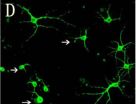(Press-News.org) Stigmatization may have once served to protect early humans from infectious diseases, but that strategy may do more harm than good for modern humans, according to Penn State researchers.
"The things that made stigmas a more functional strategy thousands of years ago rarely exist," said Rachel Smith, associate professor of communication arts and sciences and human development and family studies. "Now, it won't promote positive health behavior and, in many cases, it could actually make the situation worse."
Stigmatizing and ostracizing members stricken with infectious diseases may have helped groups of early humans survive, said Smith, who worked with David Hughes, assistant professor of entomology and biology. Infectious agents thrive by spreading through populations, according to Smith and Hughes, who published an essay in the current issue of Communication Studies.
For early humans, a person who was stigmatized by the group typically suffered a quick death, often from a lack of food or from falling prey to a predator. Groups did not mix on a regular basis, so another group was unlikely to adopt an ostracized person. Infectious disease stigmas may have evolved as a social defense for group-living species, and had adaptive functions when early humans had these interaction patterns.
However, modern society is much larger, more mobile and safer from predators, eliminating the effectiveness of this strategy, according to Smith.
"In modern times, we mix more regularly, travel more widely, and also there are so many people now," Smith said. "These modern interaction patterns make stigmatization unproductive and often create more problems."
Hughes studies disease in another successful society, the ants, which have strong stigma and ostracism strategies that serve group interests at the cost to individuals.
"Ants are often held up as paragons of society and efficiency but we certainly do not want to emulate how they treat their sick members, which can be brutal," said Hughes.
Stigmatization could actually make infectious disease management worse. The threat of ostracization may make people less likely to seek out medical treatment. If people refuse to seek treatment and go about their daily routines, they may cause the disease to spread farther and faster, according to the researchers, who are both investigators in the Center of Infectious Disease Dynamics in Penn State Huck Institutes of the Life Sciences.
Stigmatization may harm a person's ability to survive a disease. Ostracization may increase stress, lessening the body's ability to fight off diseases and infections.
"People are very sensitive to rejection and humans worry about being ostracized," said Smith. "These worries and experiences with rejection can cause problematic levels of stress and, unfortunately, stress can compromise the immune system's ability to fight off an infection, accelerating disease progression."
Once applied, a stigma is difficult to remove, even when there are obvious signs that the person was never infected or is cured. Health communicators should make sure they intentionally monitor if their public communication or intervention materials create or bolster stigmas before using them, Smith said.
INFORMATION: END
Stigmas, once evolutionarily sound, are now bad health strategies
2014-03-28
ELSE PRESS RELEASES FROM THIS DATE:
Fabricating nanostructures with silk could make clean rooms green rooms
2014-03-28
MEDFORD/SOMERVILLE, MASS. -- Tufts University engineers have demonstrated that it is possible to generate nanostructures from silk in an environmentally friendly process that uses water as a developing agent and standard fabrication techniques. This approach provides a green alternative to the toxic materials commonly used in nanofabrication while delivering fabrication quality comparable to conventional synthetic polymers. Nanofabrication is at the heart of manufacture of semi-conductors and other electronic and photonic devices.
The paper describing this work, "All ...
Safety and immunogenicity of 2 doses of the HPV-16/18 AS04 adjuvanted vaccine Cervarix
2014-03-28
A recent study in the journal Human Vaccines & Immunotherapeutics, showed that two doses of the HPV-16/18 AS04-adjuvanted vaccine Cervarix (GlaxoSmithKline) are non-inferior to three-doses in the current schedule.
Since high coverage and compliance rates can be difficult to achieve with the current three-dose HPV vaccineregimen, several studies have looked at the possibility of reducing the number of doses. Proof-of-principle that a two-dose schedule can provide sufficient protection against cervical cancer came initially from a study performed in Costa Rica in 2011. ...
Repeated hUCB injections may improve prognosis of children with deadly inherited disorder
2014-03-28
Putnam Valley, NY. (Mar. 28 2014) – New insight has been gained into treating an inherited disorder that creates serious neurological and behavioral disabilities in children and usually leads to death in the teen years.
In a recent study into the effects of human umbilical cord blood mononuclear cells (hUCB MNCs) when they are injected to counter the symptoms and progression of Sanfilippo syndrome type III B (MPS III B), researchers found that repeated injections into laboratory mice modeled with the disorder had clear benefits for the mice receiving multiple injections ...
Rainbow-catching waveguide could revolutionize energy technologies
2014-03-28
BUFFALO, N.Y. – More efficient photovoltaic cells. Improved radar and stealth technology. A new way to recycle waste heat generated by machines into energy.
All may be possible due to breakthrough photonics research at the University at Buffalo.
The work, published March 28 in the journal Scientific Reports, explores the use of a nanoscale microchip component called a "multilayered waveguide taper array" that improves the chip's ability to trap and absorb light.
Unlike current chips, the waveguide tapers (the thimble-shaped structures above) slow and ultimately absorb ...
Gene may predict if further cancer treatments are needed
2014-03-28
DALLAS – March 28, 2014 – UT Southwestern Medical Center researchers are developing a new predictive tool that could help patients with breast cancer and certain lung cancers decide whether follow-up treatments are likely to help.
Dr. Jerry Shay, Vice Chairman and Professor of Cell Biology at UT Southwestern, led a three-year study on the effects of irradiation in a lung cancer-susceptible mouse model. When his team looked at gene expression changes in the mice, then applied them to humans with early stage cancer, the results revealed a breakdown of which patients have ...
Erectile dysfunction can be reversed without medication
2014-03-28
Men suffering from sexual dysfunction can be successful at reversing their problem, by focusing on lifestyle factors and not just relying on medication, according to research at the University of Adelaide.
In a new paper published in the Journal of Sexual Medicine, researchers highlight the incidence of erectile dysfunction and lack of sexual desire among Australian men aged 35-80 years.
Over a five-year period, 31% of the 810 men involved in the study developed some form of erectile dysfunction.
"Sexual relations are not only an important part of people's wellbeing. ...
NUS researchers developed world's first fluorescent sensor to detect date rape drug
2014-03-28
A team of researchers from the National University of Singapore (NUS) has developed the world's first fluorescent sensor to identify the presence of a drug known as GHB that is commonly used to spike beverages. When the sensor is mixed with a sample of a beverage containing GHB, the mixture changes colour in less than 30 seconds, making detection of the drug fast and easy.
This simple mix-and-see discovery, led by Professor Chang Young-Tae of the Department of Chemistry at the NUS Faculty of Science, is a novel scientific breakthrough that contributes towards prevention ...
More male fish 'feminized' by pollution on the Basque coast
2014-03-28
The UPV/EHU's Cell Biology in Environmental Toxicology group has conducted research using thick-lipped grey mullet and has analysed specimens in six zones: Arriluze and Gernika in 2007 and 2008, and since then, Santurtzi, Plentzia, Ondarroa, Deba and Pasaia. The acquisition of feminine features by male fish has been detected, to a greater or lesser extent, in all the estuaries, not only in the characteristics of the gonads of the specimens analysed but also in various molecular markers. According to Miren P. Cajaraville, director of the research group, the results show ...
Fingerprint of dissolved glycine in the Terahertz range explained
2014-03-28
Chemists at the Ruhr-Universität Bochum (RUB) have, for the first time, completely analysed the fingerprint region of the Terahertz spectrum of a biologically relevant molecule in water, in this case, an amino acid. By combining spectroscopy and molecular-dynamics simulations, they rendered the motion of the most basic amino acid, glycine, visible in an aqueous solution. Their results have disproved the long-standing theory that frequencies in the Terahertz range provide no information regarding the amino acid's motion. The team led by Prof Dr Martina Havenith-Newen and ...
Aspartic acid in the hippocampus: A biomarker for postoperative cognitive dysfunction
2014-03-28
Postoperative cognitive dysfunction is the deterioration of cognitive performance after anesthesia and surgery, and manifests as impairments in short-term memory, concentration, language comprehension, and social integration skills. Previous studies have shown that the occurrence of postoperative cognitive dysfunction is affected by many factors, including advanced age, low educational level, pre-existing cognitive impairment, alcohol abuse, and severity of coexisting illness. However, the real cause for postoperative cognitive dysfunction is still unclear. Metabolite changes ...





